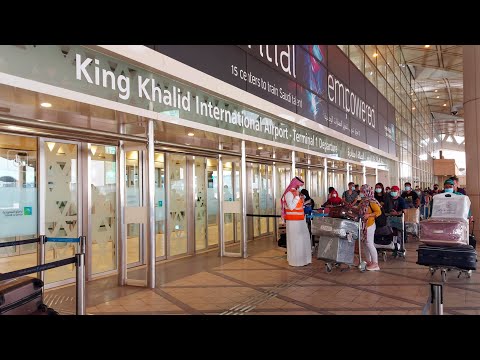
### Overview
King Khalid International Airport covers an area of approximately 225 square kilometers and comprises multiple terminals handling millions of passengers each year. It is designed to accommodate present needs and future growth with the capacity to manage significant increases in passenger volume. As Saudi Arabia’s second-busiest airport, after Jeddah’s King Abdulaziz International Airport, KKIA plays a crucial role in handling flights related to business travel, tourism, and religious pilgrimages.
### Terminals
The airport consists of five passenger terminals, a Royal Terminal for dignitaries and members of the royal family, and dedicated facilities for cargo. Terminal 1 is primarily used for international flights from various global airlines; Terminal 2 caters to international flights operated by SkyTeam alliance members; Terminal 3 handles domestic flights within Saudi Arabia; while Terminal 4 remains unused but possesses future potential for additional operations or renovations as per growing demands.
Terminal 5 is uniquely managed outside the purview of Saudi Airports Authority by Dublin Airport Authority (DAA) through its subsidiary DAA International. This terminal marks a significant development in public-private partnerships within airport administration within Saudi Arabia.
### Infrastructure & Facilities
KKIA is well-equipped with advanced aviation technologies featuring ILS (Instrument Landing System), modern radar capabilities and sophisticated baggage handling systems that ensure smooth transitioning for travelers through security checks to boarding gates.
Adding to passenger comfort are services like lounges, ample dining options ranging from fast food to gourmet meals, expansive duty-free shopping areas, conference rooms, children’s play areas and banking facilities. The presence of luxury hotels directly inside or near the airport also offers transit passengers comfortable accommodation options between flights.
### Connectivity
The airport is connected with Riyadh city center through multiple means including highways which allow straightforward access via car or bus services. Plans are also underway to integrate rail links that will enhance connectivity with urban centers across Riyadh efficiently reducing travel time significantly.
### Expansion & Modernization Initiatives
As part of Vision 2030—Saudi Arabia’s ambitious blueprint aimed at diversifying its economy away from oil dependency—the government has emphasized developing infrastructure projects around critical assets such as KKIA. Recent expansions focus on increasing capacity, enhancing customer experience through digital transformation initiatives like self-service kiosks and improving operational efficiencies with upgraded air navigation systems.
### Conclusion
King Khalid International Airport embodies Saudi Arabia’s aspirations toward becoming a pivotal gateway bridging East-West intercontinental travel while promoting Riyadh as a dynamic capital city capable of hosting global citizens whether they visit for business or leisure purposes. As it continues evolving both technologically and infrastructurally within such transformative frameworks set by Vision 2030, KKIA looks set not only to accommodate growth but also excel at offering pioneering services in air transport management regionally as well as globally.
